Installing apps on your Android device means dealing with different file types, each serving a specific purpose. This detailed guide walks you through the process of installing APK, XAPK, and OBB files, ensuring a complete understanding and a successful installation experience.
Definitions
When terms like APK, XAPK, and OBB come up, many people don’t know exactly what they mean. Unfortunately, you need to figure out these files to successfully install apps on your Android device.
So, what do these terms mean? And how do they work? Here are the full definitions:
What is an APK?
At its core, an APK is like a digital package for Android apps. It stands for Android Package Kit and is the format Android uses to distribute and install apps.
If that still doesn’t make sense, think of it as a compact box containing everything an app needs to install correctly on your device. This can include the app’s code, resources, manifest, and even its digital signature.
You usually get APK files from the Google Play Store (the official/authenticated hub for Android apps). It’s the go-to store for downloading and updating apps.
However, APKs can also come from other places like websites or file-sharing platforms. But here’s a friendly tip: get your APKs only from trusted sources! Just like with anything digital, there’s a chance some might carry unwanted guests like malware or viruses.
What is an XAPK?
It might seem overwhelming to imagine another file needed to install an app besides the regular APK file. Well, the XAPK file is crucial in installing large apps that require additional data to run optimally.
Small apps (around 100 MB) can do without an XAPK file. However, large apps need this file as it includes all the other data over 100 MB that the APK files need.
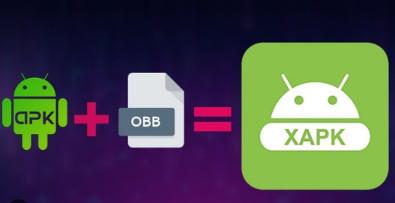
The best way to understand XAPK is to think of it as a zip file containing several folders with unique data. There can be two types as shown below:
- XAPK File: This contains APK files and OBB data
- XAPK Bundle: This contains more than one APK file plus their OBB data.
Installing these files involves unpacking them and installing individual apps (we’ll describe the process later in this article).
What is an OBB?
Now that we’ve briefly mentioned OBB files, you might be wondering what they are and how they help in the installation process.
OBB, short for Opaque Binary Blob, might sound fancy, but it’s essentially a storage place for additional data that doesn’t fit neatly into the main app package (the APK file).
It’s essential when installing large games (like Fortnite and PUBG) as they require a lot of space. As such, the OBB file stores extra data that’s only extracted when needed.
What are the Benefits of XAPK and OBB?
Navigating the intricate world of mobile apps, developers face a persistent challenge: the delicate balance between robust functionality and optimal storage use.
The inherent nature of apps, packed with extensive data sets, often results in storage overload. When you launch a game, for example, it could open a colossal 3 GB file of game data, overloading your mobile CPU and causing lag issues. Thankfully, developers have devised a creative solution: incorporating additional file sets known as XAPK or OBB.
But how do they help?
Instead of compromising app quality or burdening users with massive initial downloads, developers split the app’s data. They create separate entities, the XAPK or OBB files, which users can download as add-ons to the main program.
When the app comes to life, it selectively extracts essential data from these files, ensuring an optimized experience without overloading the device’s memory.
In graphically intensive games, where every pixel counts, XAPK and OBB files emerge as unsung heroes. A significant portion of these files serves as a graphic data package, housing vital program files for additional game features.
This includes everything from intricate maps and varied weapon sets to eye-catching skins and immersive tracks. The XAPK file, a novel format, smartly packages the Android installation file along with game data or extra content, all neatly compressed into easy-to-handle zip files.
The benefits are clear: Users can dive into their favorite games without sacrificing device performance. XAPK and OBB files, acting as auxiliary storage depots, elegantly avoid the pitfalls of memory overload, ensuring users enjoy a smooth and immersive app experience.
How to Install APK, XAPK, and OBB Files – Step-by-Step Guide
Guide to Installing APK Files
APK files (Android Package Kit) are the standard format for Android applications. Let’s dive into the detailed steps for installing APK files:
Step 1: Enable Unknown Sources
Before you can install apps from sources other than the official Google Play Store, you need to enable Unknown Sources. This is a security measure to prevent unauthorized installations. Follow these steps:
- Open Settings on your Android device.
- Navigate to Security or Biometrics and Security.
- Find the option called Unknown Sources and turn it on. You might see a security warning; confirm it by tapping OK.
This step ensures your device can install apps from sources other than the Play Store.
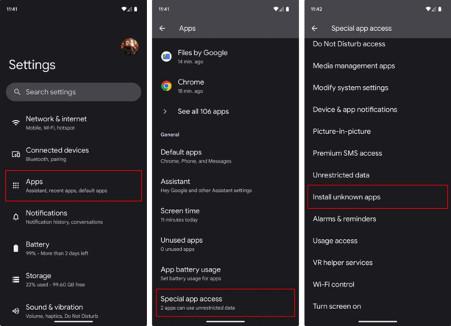
Additionally, you can enable this option specifically for your browser. To do this, go to Settings, then Apps & Notifications. Tap the three dots (usually located in the top-right corner) and select Special Access. Here, tap Install Unknown Apps, then tap Chrome (or the browser you’re using). Enable the Allow from this Source option.
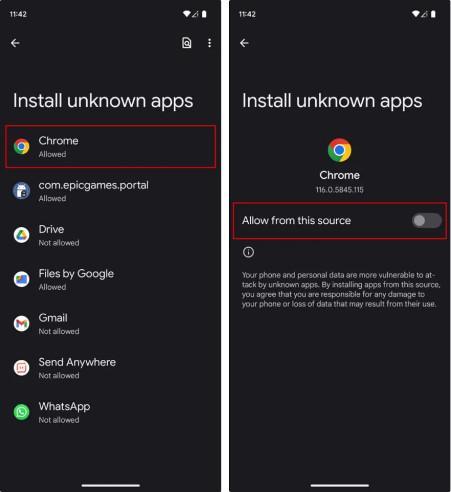
Step 2: Download the APK File
Downloading the APK file is the first step toward installing an app. Here’s how you can do it:
- Go to a trusted source to download the APK file. This can be the app’s official website, a reputable app store, or other reliable sources.
- Once downloaded, the APK file typically resides in the Downloads folder on your device.
Step 3: Install the APK
Now that you have the APK file on your device, it’s time to install it:
- Open your device’s File Manager.
- Navigate to the folder where the APK was downloaded.
- Tap on the APK file. This will initiate the installation process.
- A confirmation screen will appear. Press Install to proceed.
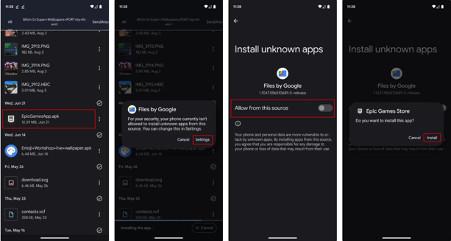
The installation process might take a few moments, depending on the app’s size. In some cases, you might see a warning saying, “This file might harm your device. Continue with download?” Click Yes to continue.
While Android devices come with a default file manager, there can be exceptions. If you have trouble locating the downloaded APK file, you might want to install another file manager. You can find these on the Google Play Store or other reputable sources. Examples include Cx File Explorer, Solid Explorer File Manager, and Mi File Manager.
Step 4: Open the Application
Once the installation is complete, tap Open to launch the app. Congratulations, you’ve successfully installed an APK!
Installing XAPK Files
XAPK files are a combination of APK and OBB files containing the necessary data for the app to function optimally. Unlike the APK installation process, installing XAPK can be somewhat tricky. This is because the default Android Package Installer/Operating System doesn’t understand XAPK files. As a result, it ignores them, making it difficult to install them using existing protocols.
Therefore, you need to break the file down into parts the system can decipher. We’ve prepared a guide to help you complete the process smoothly:
Step 1: Download the XAPK File
Download the XAPK file from a trusted source. XAPK files typically have a .xapk extension. Locate the downloaded XAPK file in your device’s Downloads folder. You need to rename it to .zip (e.g., from app.xapk to app.zip). This way, your device will recognize it as a compressed file.
Step 2: Extraction Process
Long-press the renamed file, select Extract, and specify the destination folder.
The extracted folder should contain an APK file, an Android folder, and a PNG file (which isn’t crucial).
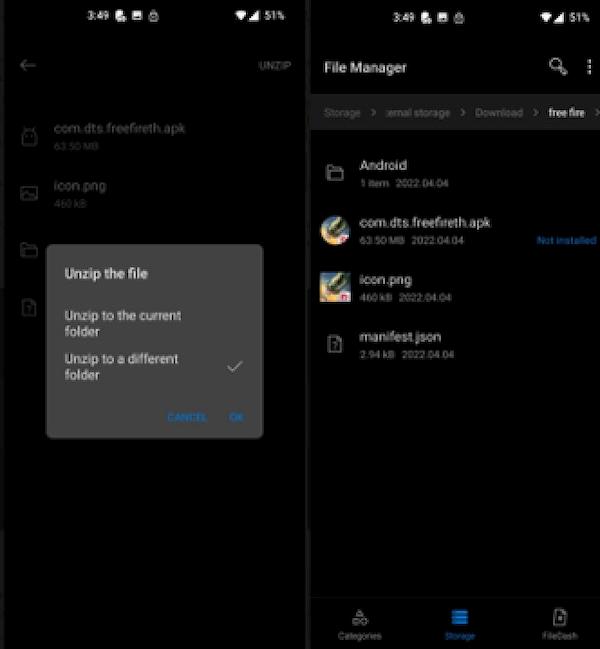
Step 3: Navigating to the Android Folder
Open the Android folder within the extracted folder. Inside, locate another folder; copy this folder to Internal Storage > Android > OBB.
Step 4: Installing the APK
Return to the extracted folder and tap on the APK file to install it. If prompted, allow the file manager to install apps from unknown sources. If your file manager (Android 11 or higher) has trouble accessing the Data and OBB folders, try using the stock file manager or the Files by Google app.
Alternatively, connect your phone to a computer and transfer the files using File Explorer on Windows or Finder on macOS.
Step 5: Open the Application
Once the installation is complete, tap Open to launch the app. You’ve successfully installed an app using the XAPK format!

If this process seems too complicated, you can use a third-party app. However, make sure you get it from a reliable source to avoid disappointments and potential risks. Here are the steps to follow for this option:
Step 1: Install the XAPK Installer
To handle XAPK files, you need a specialized tool. Follow these steps:
- Go to the Google Play Store and search for XAPK Installer.
- Install the XAPK Installer app on your device.
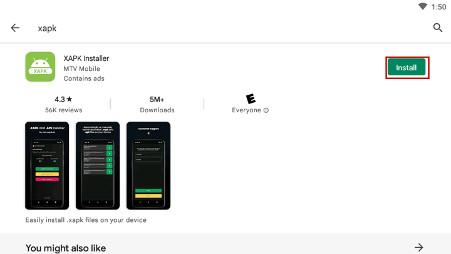
Step 2: Open the XAPK Installer
Now that you have the necessary tool, let’s open it:
- Launch the XAPK Installer app.
- Find and select the downloaded XAPK file.
Step 3: Install the XAPK
The XAPK Installer will take care of extracting and installing the APK and OBB files. Here’s what you need to do:
- Tap Install to start the installation process.
- The installation may take some time, depending on the app’s size and complexity.

Installing Split APK Files with Split APKs Installer (SAI)
Split APK files separate app resources into multiple files, with one containing the main code and others for specific system architectures.
- Download and install the Split APKs Installer (SAI) app from the official source.
- Launch SAI and tap Install APKs (you can also enable the Use ZipFile API option).
- Choose a file picker option and navigate to the folder where the XAPK file is extracted.
- Select the APK files from the extracted folder and tap Select.
- A dialog box will appear showing information about the Base and Config APKs. Tap Install.
- If prompted, enable Allow from this source to give the app permission to install the APK.
- SAI will handle the installation process. Once finished, find the new app in your device’s app drawer.
By following these detailed steps, you’ll be able to successfully install both regular and split XAPK files on your Android device, expanding your app options beyond the Play Store’s limits.
Installing OBB Files
OBB files (Opaque Binary Blob) contain additional data required by specific apps, and it’s crucial to install them correctly. Let’s break down the steps:
Step 1: Download the OBB File
- Choose a trusted source to download the OBB file for the app you’re interested in.
- Remember where you save the OBB file on your device.
Step 2: Install a File Manager App
- If you don’t have a file manager app, download one from the Google Play Store, such as Files by Google or Cx File Explorer.

Step 3: Locate the OBB File
- Open your file manager app and navigate to where you saved the downloaded OBB file.
Step 4: Install Third-Party Apps (Optional)
- If you prefer an automated process, you can use third-party apps. Download and install the app from Google Play Store or its official website.
Step 5: Grant Necessary Permissions (Third-Party App)
- Open the third-party app and grant the required permissions.
- Locate the OBB file using the app’s file manager and tap on it.
- Confirm the installation when prompted and wait for it to finish.
Step 6: Manual Installation Process
- If installing manually, tap and hold the OBB file with your file manager app.
- Select Extract from the menu to create a folder with the app’s name.
- Cut or copy this folder.
Step 7: Paste in Android > OBB Directory
- Navigate to your device’s internal storage using the file manager.
- Find the path: Android > OBB.
- Paste the copied folder into this destination path.

Step 8: Wait for Completion and Launch the App
- Allow the file transfer process to complete.
- Once done, launch the app.
How to Uninstall Games/Apps – Step-by-Step Guide
Uninstalling apps and games from your Android device is a straightforward process that can be accomplished through several methods.
Uninstalling Apps via Settings
The Settings app offers a standard method for uninstalling any app on your device. Here’s how you can remove apps using the Settings:
- Tap on the Settings icon on your device.
- Scroll down and tap on “Apps” or “Applications,” depending on your device.
- Tap on “See all apps” to view a list of all installed applications.
- Scroll through the list to find the app you wish to uninstall, and select it.
- Tap on the “Uninstall” button.
- A confirmation dialog will appear. Tap “OK” to complete the uninstallation.
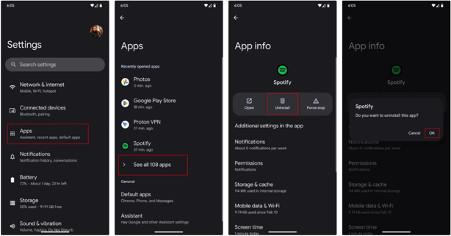
Uninstalling Apps via Google Play Store
Uninstalling apps directly through the Google Play Store is especially useful if you want to manage multiple apps:
- Launch the Google Play Store app on your device.
- Tap on your profile image at the top-right corner.
- Select “Manage apps & device.”
- Switch to the “Manage” tab.
- Find the apps you want to uninstall and check the box next to them.
- Tap the trash can icon, then select “Uninstall.”
This approach is perfect for bulk managing apps, making it easy to keep your device organized.
Uninstalling Apps from Home Screen or App Drawer
For the quickest uninstallation method:
- Find the app you want to uninstall either in the app drawer or on the home screen.
- Press and hold the app icon.
- Drag the icon to the “Uninstall” section that appears on the screen.
- Tap “OK” in the confirmation pop-up to uninstall the app.
If this method is unavailable on your device due to older Android versions, use the Settings or Google Play Store methods.

Additional Tip: Accessing App Info
From either the home screen or app drawer:
- Tap and hold on to the app.
- Release and then select “App info.”
- Tap “Uninstall,” followed by “OK” to confirm.
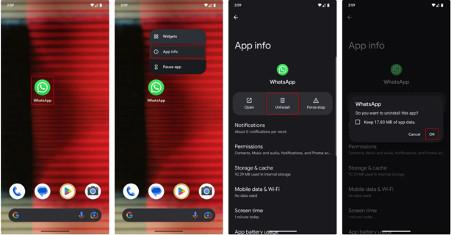
Conclusion
Mastering the installation of APK, XAPK, and OBB files on your Android device is crucial. Whether you’re installing regular APKs for standalone apps, navigating the additional steps for XAPK files, or enhancing apps with supplementary resources through OBB files, the process requires attention to detail and caution.
Always prioritize downloading from trusted sources to protect your device against potential security threats. By following these comprehensive guides, you empower yourself to explore diverse apps and games, customizing your Android experience according to your preferences and needs.

